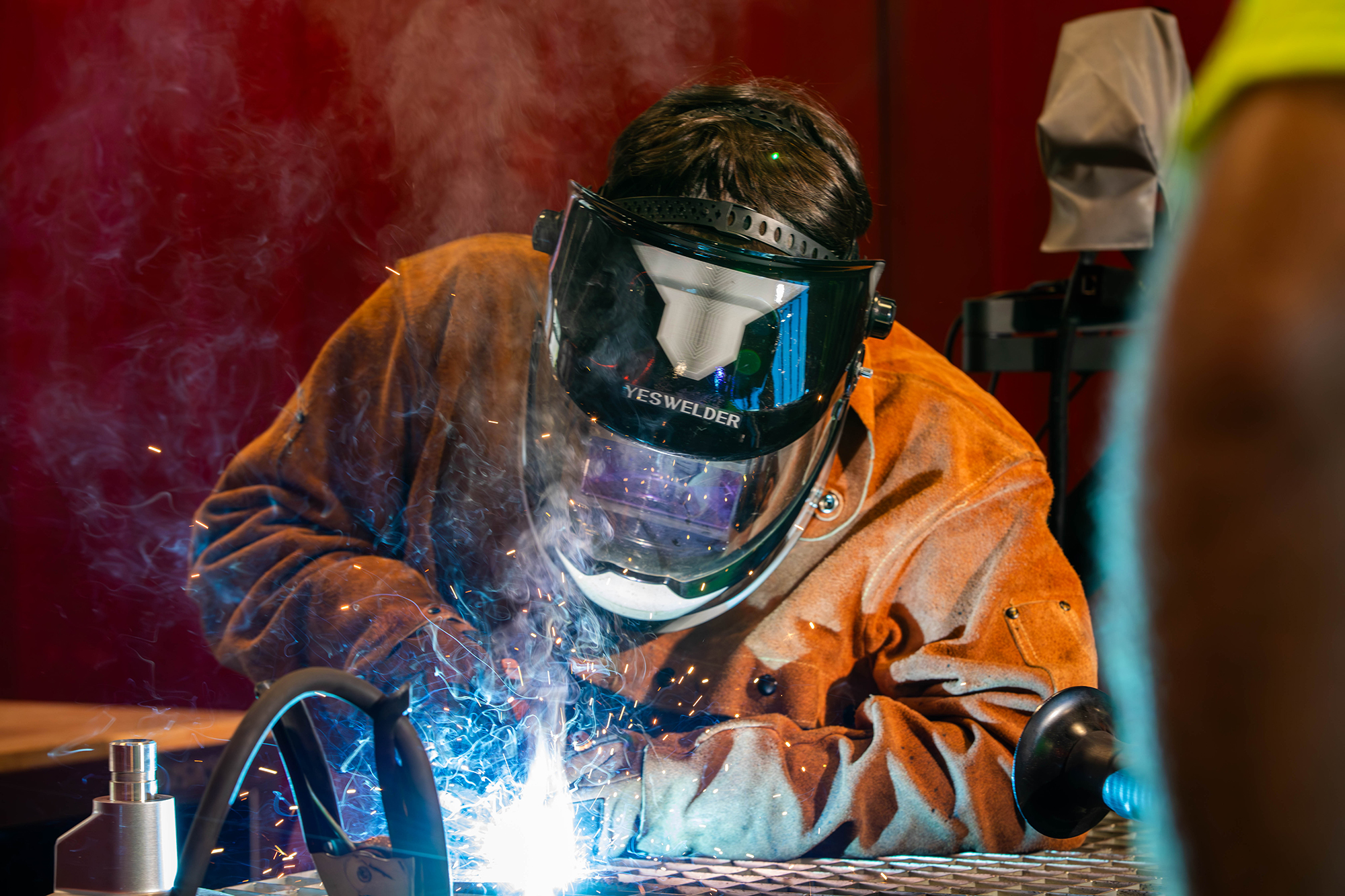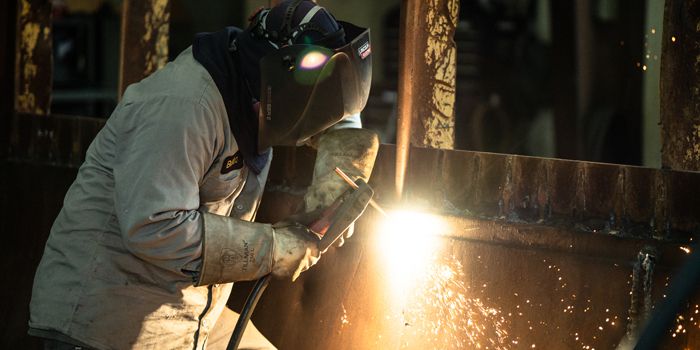Common Welding Repair Issues and How to Address Them Effectively
Welding fixings typically run into a series of issues that can jeopardize the integrity of the end product. Typical problems consist of poor penetration, porosity, and imbalance, to name a few. Each flaw offers one-of-a-kind challenges that call for details methods for resolution. Comprehending these problems is important for welders intending to enhance their abilities and results. This conversation will explore these usual welding repair work concerns and effective approaches to address them.
Poor Infiltration
Inadequate infiltration happens when the weld metal fails to fully fuse with the base material, resulting in weak joints and potential structural failings. This problem often stems from not enough warmth input, incorrect electrode angle, or improper welding rate. Welders might come across poor penetration as a result of a mistake of the needed parameters for a details product density or type. Additionally, contamination on the base material's surface area can prevent reliable bonding, exacerbating the trouble. To attend to poor infiltration, welders must guarantee proper setups on their tools and keep a clean work surface area. Routine inspection of welds is advised to recognize any deficiencies early, enabling for timely adjustments and the avoidance of endangered architectural stability in bonded assemblies.
Porosity
Porosity is a common issue in welded joints that materializes as small gas bubbles trapped within the weld steel. This flaw can jeopardize the honesty of the weld, resulting in lowered stamina and prospective failing under stress. Belgrade Fabrication. Porosity typically emerges from contamination, moisture, or inappropriate welding strategies, which enable gases to escape right into the liquified weld swimming pool. To resolve porosity, welders should ensure appropriate surface preparation, keep a tidy working environment, and utilize suitable welding criteria. In addition, choosing the best filler material and protecting gas can minimize gas entrapment. Regular evaluation and testing of welds can assist identify porosity early, assuring timely rehabilitative actions are taken, consequently protecting the top quality and integrity of the welded framework
Imbalance
Imbalance in welding can emerge from various aspects, including improper setup and thermal growth. Comprehending the source is vital for efficient resolution. Several modification methods are readily available to realign components and assure structural integrity.
Reasons for Imbalance
Welding misalignment usually comes from a range of underlying problems that can jeopardize structural honesty. One primary cause is improper fit-up of elements before welding, which can lead to voids and unequal surfaces. Variants in thermal development during the welding process can additionally lead to distortion, particularly if the products being signed up with have various coefficients of expansion. Additionally, insufficient securing and fixturing might fail to hold components firmly in area, leading to activity throughout welding. Improperly kept equipment, consisting of welding machines and tools, may present variances in the weld bead, additional adding to imbalance. Driver error, stemming from inadequate training or experience, can additionally play a considerable function in producing misaligned welds.

Modification Techniques Readily Available
Attending to imbalance efficiently calls for a mix of restorative methods customized to the specific concerns at hand. One common method is making use of jigs or components to hold components in the correct setting during welding, making certain regular alignment. Furthermore, preheating the materials can aid minimize distortion and enhance fit-up. For substantial imbalance, mechanical realignment methods, such as using hydraulic jacks or clamps, can be employed to deal with the placement before welding. Post-weld warmth therapy might likewise be necessary to soothe anxieties created by misalignment. Finally, mindful examination and change during the arrangement phase can protect against misalignment problems from coming to be considerable problems, advertising a smoother welding process and boosting overall architectural stability.
Distortion
Distortion is a typical obstacle in welding that can develop from numerous variables, consisting of irregular heating & cooling. Comprehending the root causes of distortion is crucial for executing effective avoidance methods. Addressing this issue not only enhances structural integrity however additionally improves the general high quality of the weld.
Reasons for Distortion
When subjected to the extreme warm of welding, materials typically undergo changes that can lead to distortion. This sensation primarily develops from thermal development and contraction during the welding procedure. As the weld area warms up, the material expands; upon air conditioning, it contracts, which can produce internal stress and anxieties. In enhancement, uneven heating across a workpiece can worsen these anxieties, resulting in bending or bending. The sort of product additionally plays a substantial function; steels with varying thermal conductivity and coefficients of development might react in a different way, causing unpredictable distortions. Additionally, poor joint style and inadequate fixturing can add to misalignment throughout welding, increasing the chance of distortion. Recognizing these reasons is essential for effective welding repair service and prevention strategies.
Prevention Techniques
Efficient avoidance techniques for distortion during welding concentrate on controlling warmth input and making sure proper joint design. Keeping a constant warm input assists to reduce thermal growth and contraction, which can result in distortion. Using methods such as pre-heating the workpiece can additionally decrease the temperature level view website gradient, promoting uniform home heating. Additionally, picking proper joint styles, such as T-joints or lap joints, can boost stability and lower stress and anxiety concentrations. Applying appropriate fixturing to safeguard the work surfaces in position even more aids in maintaining alignment throughout the welding procedure. Staggered welding series can distribute warm more equally, avoiding localized distortion. By applying these approaches, welders can considerably reduce the probability of distortion and improve the total top quality of their welds.
Breaking
Fracturing is a typical problem come across in welding repair work, usually arising from various elements such as inappropriate air conditioning prices, material selection, or insufficient joint prep work. The event of fractures can greatly jeopardize the integrity of the weld, causing possible failings throughout procedure. To resolve this problem, welders must first assess the origin, guaranteeing that materials work and suitably picked for the specific application. In addition, controlling the air conditioning rate during the welding procedure is vital; fast air conditioning can generate anxiety and lead to splitting. Proper joint style and prep work likewise add to lessening the risk. Carrying out these strategies can improve weld high quality and toughness, ultimately decreasing the likelihood of breaking in finished weldments.

Insufficient Blend
A significant problem in welding repairs is insufficient combination, which occurs when the weld steel does not appropriately bond with the base product or previous weld passes - Welding. This flaw can cause weak points in the joint, potentially endangering the stability of the welded structure. Elements contributing to incomplete combination consist of not enough warmth input, improper welding strategy, and contamination of the surface areas being signed up with. To resolve this issue effectively, welders need to ensure appropriate pre-weld cleansing and surface area prep work, in addition to adjust their welding specifications to achieve adequate penetration and blend. Routine examination during the welding process can additionally aid recognize insufficient fusion early, enabling timely corrective measures to enhance the general top quality of the weld
Overheating
While welding repair work can boost structural integrity, overheating provides a significant difficulty that can bring about material destruction. Excessive heat throughout welding can modify the mechanical homes of metals, leading to reduced strength, raised brittleness, and warping. This phenomenon is particularly vital in high-stress applications where architectural dependability is critical. Recognizing overheating can entail aesthetic assessments for discoloration or distortion, in addition to monitoring temperature level throughout the welding process. To minimize the risks connected with getting too hot, welders must use proper methods, such as managing heat input, adjusting traveling rate, and utilizing appropriate filler materials. Furthermore, implementing pre- and post-weld heat treatments can assist bring back material residential or commercial properties and boost the general quality of the repair service, ensuring lasting performance and safety and security.
Frequently Asked Questions
What Are the Common Indications of a Welding Issue?

How Can I Examine My Welds for High quality?
To evaluate welds for top quality, one can utilize visual inspections, ultrasonic screening, and radiographic techniques. Each technique assures architectural integrity, recognizes flaws, and validates adherence to specified criteria, eventually boosting the reliability of the welded joints.
What Security Preventative Measures Should I Take While Welding?
When welding, one need to prioritize security by wearing proper personal protective equipment, making certain appropriate ventilation, safeguarding flammable products away, maintaining a tidy workspace, and knowing surroundings to avoid injuries and mishaps.
Can I Fix a Weld Without Remodeling the Entire Joint?
Fixing a weld without redoing best flux core wire the whole joint is feasible, depending upon the damages (Montana Mobile Welding and Repair Belgrade Fabrication). Strategies such as grinding, adding filler product, or making use of a welding process can effectively address particular defects while protecting the bordering framework
What Equipment Are Essential for Effective Welding Repairs?
Vital devices for reliable welding repair work include a welding machine, cable brush, grinder, protective gear, clamps, and filler materials. Each tool plays a crucial duty in guaranteeing high quality and safety during the fixing procedure. Porosity typically arises from contamination, dampness, or incorrect welding strategies, which enable gases to get away right into the molten weld pool. Inadequately conserved tools, consisting of welding equipments and devices, might present incongruities in the weld grain, additional adding to misalignment. When subjected to the intense warm of welding, products commonly undergo modifications that can lead to distortion. Cracking is a common concern experienced in welding repairs, often resulting from numerous aspects such as improper cooling prices, material selection, or poor joint preparation. A considerable issue in welding repair services is insufficient blend, which happens when the weld metal does not effectively bond with the base material or previous weld passes.
Comments on “The impact of overheating compromises welds and Montana Mobile Welding and Repair Welding’s approach to fix it”